 |
| A "political education" camp in China's Xinjing province Photo by Greg Baker |
'It’s a place where they try to destroy you': why concentration camps are still with us
Mass internment camps did not begin or end with the Nazis – today they are everywhere from China to Europe to the US. How can we stop their spread?
Thursday 2 April 2020
At the start of the 21st century, the following things did not exist. In the US, a large network of purpose-built immigration prisons, some of which are run for profit. In western China, “political education” camps designed to hold hundreds of thousands of people, supported by a high-tech surveillance system. In Syria, a prison complex dedicated to the torture and mass execution of civilians. In north-east India, a detention centre capable of holding 3,000 people who may have lived in the country for decades but are unable to prove they are citizens. In Myanmar, rural encampments where thousands of people are being forced to live on the basis of their ethnicity. On small islands and in deserts at the edges of wealthy regions – Greece’s Aegean islands, the Negev Desert in Israel, the Pacific Ocean near Australia, the southern Mediterranean coastline – various types of large holding centres for would-be migrants.
The scale and purpose of these places vary considerably, as do the political regimes that have created them, but they share certain things in common. Most were established as temporary or “emergency” measures, but have outgrown their original stated purpose and become seemingly permanent. Most exist thanks to a mix of legal ambiguity – detention centres operating outside the regular prison system, for instance – and physical isolation. And most, if not all, have at times been described by their critics as concentration camps.
We tend to associate the idea of concentration camps with their most extreme instances – the Nazi Holocaust, and the Soviet Gulag system; genocide in Cambodia and Bosnia. But the disturbing truth is that concentration camps have been widespread throughout recent history, used to intern civilians that a state considers hostile, to control the movement of people in transit and to extract forced labour. The author Andrea Pitzer, in One Long Night, her recent history of concentration camps, estimates that at least one such camp has existed somewhere on Earth throughout the past 100 years.
The definition of a concentration camp is sometimes fuzzy, but at root, such camps represent a combination of physical and legal power. They are a way for modern states to segregate groups of civilians by placing them in a closed or isolated location via special rules that are distinct from a country’s main system of rights and punishments. Many have been set up under military jurisdiction – by the British during the Boer war, for instance – while others, such as the Soviet gulags, have been used in peacetime to deal with social “undesirables”.
Cruelty and the abuse of power have existed throughout human history, but concentration camps have not. They are little more than a century old. The earliest began as wartime measures, but on numerous occasions since then they have become lasting features. They are a product of technologically advanced societies with sophisticated legal and political systems and have been made possible by a range of modern inventions. Military technologies such as automatic weapons or barbed wire made it easier for small groups of officials to hold much larger groups of people captive. Advanced bureaucracy and surveillance techniques enabled states to watch, count and categorise civilians in ways they couldn’t have done in earlier eras. As Pitzer writes, such camps “belong in the company of the atomic bomb as one of the few advanced innovations in violence”.
This innovation haunts the political imagination of liberal democracies. The concentration camp is a symbol of everything such societies are supposed to stand against: the arbitrary use of power and the stripping of people’s rights, the systematic removal of liberty; dehumanisation, abuse, torture, murder and genocide. When it is used to refer to contemporary places, the term “concentration camp” is often reserved for the locations of the most serious human rights abuses, as when Amnesty International used it in a 2017 report estimating that 13,000 people had been murdered by Syria’s Assad regime in the Saydnaya military prison outside Damascus. But politicians, Alexandria Ocasio-Cortez among them, have also used the term to describe camps such as the ones the Trump administration has been running on the US border with Mexico.
To some, these comparisons minimise the use of concentration camps by Nazi Germany in its effort to exterminate Jews. For others, the comparisons are a necessary warning, not least because one kind of camp can easily transform into another. Pitzer gives the example of a refugee camp: if people are not allowed to leave, and are systematically denied their rights, then it starts to resemble more sinister creations. As authoritarians and rightwing populists reach positions of power in various parts of the world, liberals are voicing fears that history is repeating itself.
Surveying what he called “a century of camps” in the mid-90s, the sociologist Zygmunt Bauman warned that the temptation for governments to use them would always be strong “when certain humans are declared redundant or forced into a superfluous condition”. There is no shortage of threats in the current century – from environmental catastrophe to the unfolding coronavirus pandemic – that are creating such conditions. The question is how to ensure that the concentration camp is not the state’s inevitable response.
It is tempting to regard the concentration camp as an anomaly, but for some observers, such camps are a grim reflection of the way modern states work. After the second world war, as knowledge of the Holocaust became widespread, leading theorists sought to offer explanations for the genocide that had taken place, and the methods used to carry it out. Writing in 1950, the Martiniquan poet and politician Aimé Césaire argued that the Holocaust “applied to Europe colonialist procedures” that until then had been reserved exclusively for people of colour.
Concentration camps were indeed colonial in origin. Their earliest uses came at the turn of the 20th century – by the Spanish in 1896 to put down a rebellion in Cuba, by the US in 1899 to do similar in the Philippines, and by the British empire in southern Africa during the Boer war of 1899-1902. The first use of concentration camps for a deliberate policy of extermination was not in Europe but in German South West Africa – modern-day Namibia – between 1904 and 1907. (Germany only recently officially acknowledged its treatment of the Herero and Nama tribes as genocide.)
For Césaire, the appearance of camps in Europe itself was a direct result of the way in which Europeans had attempted to dehumanise their colonial subjects in order to exploit them, but ended up dehumanising themselves. “Colonisation,” he wrote, “works to decivilise the coloniser, to brutalise him in the true sense of the word, to degrade him, to awaken him to buried instincts, to covetousness, violence, race hatred and moral relativism.”
The German-Jewish political theorist Hannah Arendt also turned her attention to camps after the war. Like Césaire, Arendt drew links between the behaviour of European powers in their colonies and their conduct at home, but she also highlighted how some of the tools wielded by authoritarians had been put in place by democracies before the rise of fascism. In her 1951 book The Origins of Totalitarianism, Arendt pointed out that when France was occupied by Nazi Germany, for instance, the Gestapo was able to make use of draconian police powers already in existence to round up and detain civilians. These existed because France, like many other states in Europe, had been unable to deal with the mass displacement of people in the aftermath of the first world war and had instituted harsh measures to deal with unwanted migrants.
In 1940, Arendt had her own direct experience of this relatively novel form of containment. After fleeing Germany for France, she was placed in an internment camp at Gurs, near the Pyrenees. The camp had been established a few years earlier to detain republican refugees from the Spanish civil war; it was repurposed in 1939 for “enemy aliens” – a practice instigated by the British in the first world war and subsequently copied by many countries. The inmates had to endure overcrowding, disease and insufficient food rations, and were made to live together regardless of the fact that some were Nazi party members and others, like Arendt, were Jewish refugees. It was partly the memory of this that led Arendt to place internment on a continuum with the Soviet gulags and the Nazi death camps – as she saw it, the “Hades, Purgatory and Hell” of state violence.
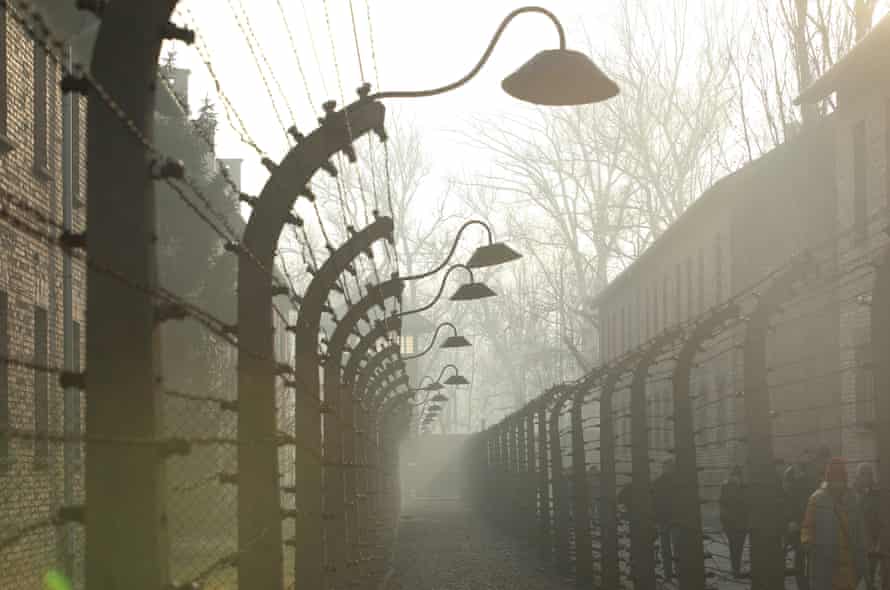
That the British, Americans, Spanish, French and Germans, among other nations, had all used concentration camps led some thinkers to ask whether such camps were inevitable features of the modern state. Perhaps the most provocative answer comes from the Italian philosopher Giorgio Agamben, whose ideas have grown in prominence in the past two decades. For Agamben, the existence of the concentration camp reveals something fundamental about power – who holds it, and what gives them the authority to wield it. His work is dense, ranging across ancient Greek and Roman law, Biblical texts and Renaissance literature, but it has been influential on a generation of scholars and activists in the past two decades – particularly among those who wanted to understand the camp established by the US at Guantánamo Bay, under an emergency policy after 9/11, or the growing phenomenon of immigration detention at the borders of the rich world.
Sovereignty, as Agamben sees it, is founded on absolute power over human life, and has been since ancient times. The sovereign has the power not only to kill, but to strip people of rights through forms of banishment, reducing them to a state of what he calls “bare life”. In the past, sovereignty would have been concentrated in the figure of the monarch; modern states are supposed to have improved upon monarchy by restraining the arbitrary use of power through democratic checks and balances. But, according to Agamben, the tendency to banish and dehumanise keeps on coming back in the form of the concentration camp: a space where people are outside the law, yet more subject to its power than anywhere else.
For Agamben, this reveals the basis on which power is exercised by modern states. In his words, the concentration camp is the “nomos” or fundamental principle of modern societies, the “hidden matrix” of politics in our age. While they may only sometimes use it, governments retain the power to declare emergency measures – a “state of exception” in Agamben’s words – to strip us of rights, and confine us to spaces in which we live a kind of exile. The camp’s logic, he implies, pervades seemingly free societies through modern state techniques of surveillance, bureaucracy, violence and other forms of coercion.
Grand theories such as those of Césaire, Arendt and Agamben are valuable, but risky. By seeking to identify common patterns across specific societies, at different moments in history, they warn that all modern states have the potential to set up concentration camps. Misconstrued, however, they can end up obscuring crucial differences – such as the distinction between camps used in a deliberate policy of extermination, and those where people die through neglect. Holocaust deniers, for instance, or people who seek to downplay the severity of colonial massacres, often try to muddy these distinctions.
When theory becomes dogma, it can also limit our understanding of the present. Agamben’s own recent trajectory offers a cautionary tale: in late February 2020, he published a short essay in the leftwing Italian newspaper Il Manifesto criticising his government’s draconian restrictions on public freedoms aimed at halting the spread of the coronavirus. The piece referred to “the invention of an epidemic”, and went further than merely questioning the long-term impact of these restrictions; it condemned them as “frenetic, irrational, and entirely unfounded”, arguing the virus was “not too different from the normal flu”. The piece has been widely criticised, and provoked a retort from the French philosopher Jean-Luc Nancy that had he listened to Agamben’s advice not to have a heart operation 30 years ago, he would now be dead.
Agamben is hardly the only person to have underestimated the threat posed by the coronavirus in recent months. As more governments pass emergency laws to deal with the pandemic, in some cases including draconian surveillance measures and the establishment of segregated quarantine camps, it is right to ask where these might lead, and whether states will be willing to give up their new powers once the immediate danger to public health has passed. But that shouldn’t obscure the fact that some emergencies are real: in these situations, the most important question is whether societies can respond to them without permanently destroying people’s rights.
Concentration camps are uniquely dangerous spaces. Their effects may vary considerably, from the horror of Auschwitz to the more mundane misery that Arendt experienced in Gurs, but the people caught up in them almost always end up being treated as less than human. And if the political and technological innovations of the late 19th century made them possible, does the 21st century make them any more likely?
In 2014, the Chinese government launched an initiative it called the Strike Hard Campaign Against Violent Terrorism, focused on the province of Xinjiang, in the country’s far west. In the English-speaking world, details of the programme remained scarce until 2017, when reports started to filter through that thousands of people from Xinjiang’s ethnic Uighur population, most of whom are Muslims, were being detained. The following year, researchers who trawled through Chinese government procurement documents and satellite imagery pointed to the existence of a vast, newly constructed complex of internment camps, which they estimated had the capacity to hold anywhere between several hundred thousand and 1.5 million people. Former inmates have given testimony to journalists and researchers that they were forced into “education” programmes, made to eat pork and drink alcohol, and given compulsory sterilisation and abortions.
This is just one example of how globalisation and technology have added a new dimension to an old problem. China has a long history of running camps – the political “re-education” programme launched by Mao in the 50s was one of the world’s most extensive gulag networks. But the latest crackdown has new features. First, the Xinjiang camps are backed up by state-of-the-art digital surveillance methods provided by leaders in the global tech industry: a computerised CCTV network developed by a state-run defence manufacturer, designed to “apply the ideas of military cybersystems to civilian public security”, which tracks individuals and analyses their behaviour to anticipate potential crime; a tracking app that visitors to Xinjiang are obliged to install on their smartphones; DNA analysis equipment partly supplied by US biotech firms. Second, China has justified its crackdown to the rest of the world by adopting the same rhetoric that the US and its allies used after 9/11. In 2014, the Communist party launched its so-called “people’s war on terror” in Xinjiang. China’s methods may be extreme, but it is by no means the first country to have introduced policies that subject Muslims to collective suspicion and punishment, in response to violent Islamic fundamentalist groups.
What else could tempt states to open camps? In her 2014 book Expulsions, the sociologist Saskia Sassen argues that the particular form of globalisation the world has experienced in recent decades – driven by a new form of laissez-faire economics – has unleashed a dangerous new dynamic that excludes large numbers of people from economic and social life. The global shift to “privatisations, deregulation and open borders for some” has brutally punished the vulnerable and accelerated environmental destruction.
In richer countries, Sassen argues, this leads to low-income workers being forced out of established welfare and healthcare programmes into more punitive systems (such as the UK’s universal credit scheme), the impoverishment of sections of the middle class through austerity policies, and more and more people being locked up in prison. In poorer parts of the world, this means mass displacement and the warehousing of migrants as they try to move elsewhere.
One result of these global pressures has been the rise of political movements that promise to shore up national, religious or ethnic identities. But identities are ambiguous, and when governments start using the tools of state power to reinforce the line between insider and outsider, there are always large numbers of people who get caught in between. In India, the government of Narendra Modi has been trying to reshape the country along Hindu nationalist lines, undermining the secular and pluralist principles that have held sway since independence. The emerging camps in Assam, a north-eastern state on the border with Bangladesh, are a result: they target thousands of mainly Muslim residents who may have lived in India for decades, but because they originally came from across the border in Bangladesh – a legacy of partition – have never been registered as citizens.
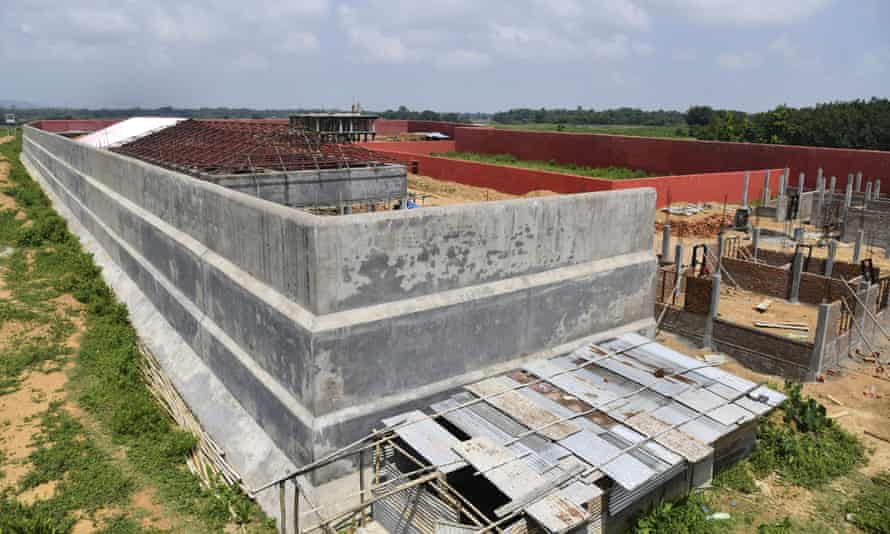
The understandable response when confronted with injustice is to look for someone to blame. It’s easier to do so when oppression is perpetrated by villainous leaders, or in other people’s societies. But particularly in liberal democracies, the chains of responsibility can be complex. Who, for instance, is responsible for the arbitrary imprisonment, torture and slave-labour conditions that migrants and refugees in Libya are subjected to? The immediate answer seems fairly simple: the state officials and local militias, some linked to trafficking networks, who run the detention centres. Thousands of people, mainly from sub-Saharan Africa, are imprisoned in a network of these centres where they are regularly subjected to starvation, disease, torture, rape, and forced labour.
But the reason those detention centres exist is because a range of European governments have been trying to get Libya to act as a block on unwanted migration across the Mediterranean for almost 20 years. The system was built with European support, both from national governments and at EU level – first through agreements with the government of Muammar Gaddafi, then, as the country collapsed after he was overthrown by a Nato-backed uprising, a patchwork of arrangements with state officials and local militias.
There is no shortage of information about what happens in Libyan detention centres – and European governments frequently profess their horror at the atrocities committed there. Yet the system persists, because those governments broadly agree that the goal of limiting migration is more important than dismantling Libya’s detention system. The political consensus in most European countries, including the UK, is that limiting unwanted migration is a reasonable and desirable aim, and large numbers of their citizens have voted in support of it.
When Zygmunt Bauman turned his attention to camps in the 90s, he argued that what characterises violence in our age is distance – not just the physical or geographical distance that technology allows, but the social and psychological distance produced by complex systems in which it seems everybody and nobody is complicit. This, for Bauman, works on three levels. First, actions are carried out by “a long chain of performers”, in which people are both givers and takers of orders. Second, everybody involved has a specific, focused job to perform. And third, the people affected hardly ever appear fully human to those within the system. “Modernity did not make people more cruel,” Bauman wrote, “it only invented a way in which cruel things could be done by non-cruel people.”
When something today is described as a concentration camp, it almost always provokes an angry dispute. If camps aren’t being used to exterminate people, as they have been in their worst instances, then the comparison is frequently condemned as inappropriate. But condemnation can be a way for governments to shield themselves from criticism of their decisions, and from criticism of the legitimacy of state power itself.
In 2018, Donald Trump’s government responded to a rise in the number of undocumented migrants – many of whom were asylum-seekers fleeing violence in Central America – crossing the US-Mexico border by drastically increasing the use of long-term immigration detention. Reports of overcrowding, filthy conditions and the denial of due process for asylum claims soon followed, accompanied by measures that seemed intended to make a symbolic display of cruelty, such as the separation of young children from their parents. In June 2019, amid the outcry from opponents of this policy, congresswoman Ocasio-Cortez recorded a video for her Instagram followers: “The US is running concentration camps on our southern border,” she stated, “and that is exactly what they are … I want to talk to the people that are concerned enough with humanity to say that ‘never again’ means something.”
This was a political intervention intended to shock people into challenging the Trump government’s immigration policy – and in the row that ensued, some commentators objected that Ocasio-Cortez’s reference to concentration camps and her use of the phrase “never again” was an inappropriate Holocaust analogy. As the historian Deborah Lipstadt commented, “something can be horrible and not be like the Holocaust”.
But much of the response from Ocasio-Cortez’s Republican opponents was to downplay the extent of abuses happening as a result of Trump’s policies, or to portray what was happening as normal and routine. Some pointed out, for instance, that Trump was only making modifications to a system built by his predecessors: deportations of undocumented immigrants, for instance, reached their peak under Barack Obama. These sorts of equivocations have accompanied the use of camps from their inception, and they always try to give the same impression: that what’s being done is normal and legitimate, that criticisms are overblown, marginal and extreme; and that states have the right to behave this way.
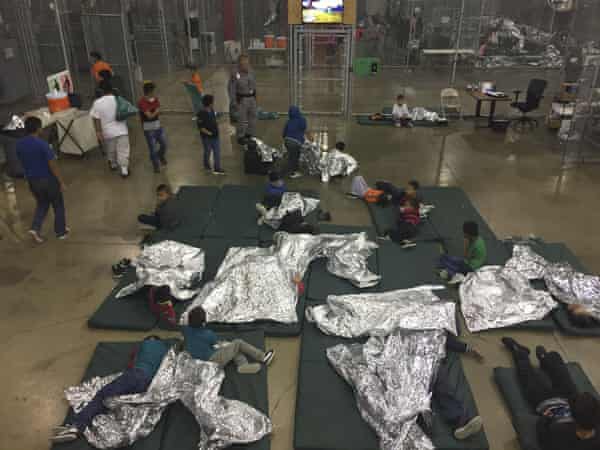
The story of Britain’s concentration camps during the Boer war illustrates how a society that thinks of itself as liberal can make excuses for a mass crime. In 1899, when the British empire went to war against two breakaway Afrikaner republics in South Africa, it set up a network of camps that quickly expanded to detain several hundred thousand people. At first the camps were justified as “protection” for Boer civilians who had signed an oath of loyalty; later, they were used to imprison Boer “undesirables” who had not signed the oath, as well as black South Africans who the British forced off their land to make them act as lookouts for troops. Due to poor sanitation, meagre food rations and overcrowding, diseases such as typhoid and measles frequently ripped through the camps; at least 28,000 white people and 20,000 black people were killed by this system in just a few years.
The two most prominent critics of Britain’s camps – the feminist campaigners Emily Hobhouse and Millicent Fawcett – both had to struggle against political and public opinion that initially saw the camps as a wartime necessity, and both fought hard to alleviate suffering. But the grounds on which they did so were radically different, as the author Vron Ware has recently argued. Fawcett, who visited South Africa with the government’s approval to produce a report on the camps, saw her concern for the welfare of vulnerable civilians as compatible with the wider aims of the camps. “Saving the children,” for her, was “as true a service to the country as that which men were rendering by going into the armies to serve in the field”. But for Hobhouse, who was the first prominent activist to visit South Africa and expose conditions in the camps, British military values and the nationalism that underpinned them were the fundamental problem. She was challenging the legitimacy of state power itself.
Hobhouse, who in her day was derided in sexist terms as a “mad” old lady, is now largely forgotten, while it is safe to say that Britain’s concentration camps are not well remembered: last year the Conservative politician Jacob Rees-Mogg defended their use on an episode of Question Time, erroneously claiming that their mortality rate was only the same as that of Glasgow’s at the time. But without Hobhouse’s radical critique, it would have been harder to oppose the harm done by Britain’s camps a century ago, and would be harder to understand why camps still appear in the world today.
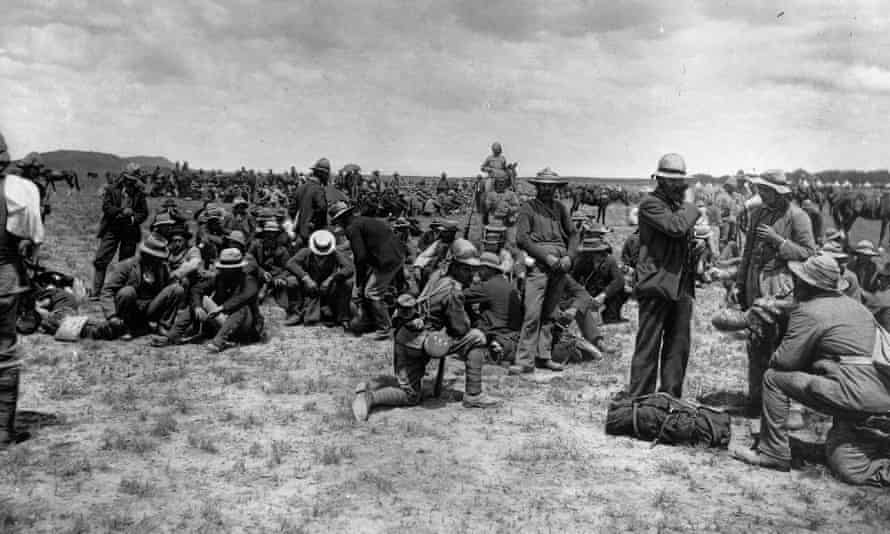
The point of historical comparisons should not be to find identical situations – no two events in history are identical – but to alert us to potential dangers in the way states exercise power. Not everyone, for instance, reacted with outrage to Ocasio-Cortez’s comments last year. While she drew criticism from some Jewish organisations, including a rebuke from the Yad Vashem Holocaust memorial in Jerusalem, the row also energised a US protest movement against Trump’s immigration policy led by leftwing Jewish activists. The movement calls itself Never Again Action, explicitly drawing on a collective memory of persecution.
In his final book, The Drowned and the Saved, the Auschwitz survivor and author Primo Levi reflected on the conditions that had made the Nazi camps possible, and wondered what lessons, if any, could be applied to a world that had moved on. The unique combination of factors that had unleashed the horror of Nazism was unlikely to return, he thought, but that should not obscure the danger of violence in our own time, or the politicians who seek to wield it. Violence, he wrote, “is there before our eyes … it only awaits its new buffoon (there is no dearth of candidates) to organise it, legalise it, declare it necessary and mandatory and so contaminate the world”.
If the state as we know it is here to stay, then what can people do when governments start building camps? The history of the concentration camp has also been a history of people’s resistance to camps, from both inside and out. Even in the most seemingly hopeless situations there are stories of people who have fought back against their treatment. The uprisings in the Nazi death camps of Sobibor and Treblinka are among the most famous; and the Soviet Gulag system was beset by strikes and revolts. On their own, these may not have been enough, but camps work by enforcing a rigid distinction between people on opposite sides of the barbed-wire fence. Those inside are kept silent and invisible, while those outside are encouraged to ignore or accept what is happening. Successful resistance aims at breaking down this distinction: governments know this, and even states that operate relatively mild forms of mass detention make significant efforts to obscure the conditions inside, and to deter their own citizens from prying too closely.
The camp on Manus Island was eventually shut down by the Australian government, after widespread public criticism, although its broader asylum policies remain largely the same. For Boochani, writing was not simply a way to expose his conditions and link up with campaigners against detention on the outside, but to challenge the very basis on which the treatment of people like him was justified. “I never use the language and the words that the [Australian] government use,” he said. “I say ‘systematic torture’, I say ‘political prisoner.’” One of the things that gave him hope in confinement, he said, was the fact that animals could wander in and out of the spaces where human freedom was limited – a reminder that the structure which held him was built by people, and could therefore also be dismantled. “Nature,” he said, “always tried to reimpose itself on the prison.”

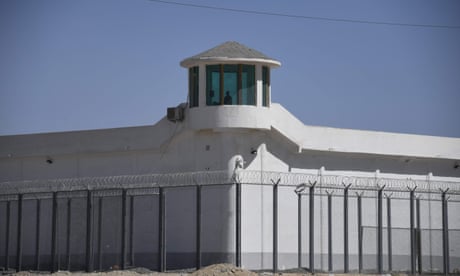

No comments:
Post a Comment